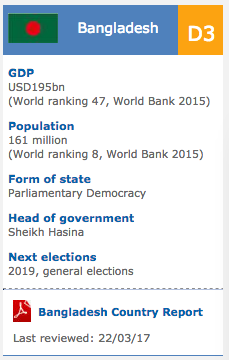Djibouti: Djibouti Agriculture Profile
2015/08/10



Poor rangeland conditions following two consecutive unfavourable rainy seasons
The 2015 “diraac/sougum” rains (March‑May) had a very late onset during the first dekad of May, with low rainfall amounts especially in pastoral areas of Ali Sabih and Obock districts. As the previous “heys/dada” (October-February) rainy season was also relatively poor, the current status of grazing resources is generally well below average as reported by the satellite-based vegetation condition analysis (see NDVI anomaly map on the right). Better pasture conditions are reported in some southern areas along the border with Ethiopia as well as in central Tadjoura district which received unseasonal abundant rains at the beginning of June. In most inland areas, some improvements of pasture and water availability are expected in the coming months with the start of the “karan/karma” rains (July‑September).
Cereal prices are generally stable
Wholesale prices of rice (Belem), mainly consumed in urban areas, declined by 4 percent between December 2014 and February 2015 and remained stable in March 2015 at USD 550 per tonne, about 6 percent below the levels of 12 months earlier. Similarly, wheat flour prices were stable in Djibouti wholesale market since early 2015 at USD 560 per tonne, about 2 percent below the level of one year earlier. By mid-June, at the beginning of the lean season, food prices are expected to further increase due to heightened demand during the Ramadan period.
Despite the slight reduction in cereal prices, the March 2015 aggregate food price index was 4.0 percent above the level of one year before, mainly due to a 10-11 percent increase in the price indexes of fish and spices.
Deteriorating food security conditions in most pastoral areas following poor grazing resources
Approximately 120 000 people (about 15 percent of the population) are estimated to be severely food insecure, mainly in Obock district and in southeastern pastoral areas, and two-thirds of them are receiving humanitarian assistance. They include about 13 000 people that since March
2015 arrived in the country fleeing from the conflict in Yemen.
Food security conditions are progressively worsening following the cumulative impact of consecutive poor rainfall seasons that negatively impacted on livestock body conditions and milk production. In coastal pastoral areas, food security is expected to improve only by October, when the “heys/daada” rainy season starts concluding the June-September lean season and kidding/calving takes place.
- Djibouti News
-
- BOTSWANA: Children on the move from Africa do not first aim to go to Europe, new UNICEF study shows
- BOTSWANA: WHO lauds Africa’s progress in malaria, HIV control
- BOTSWANA: South Africa plays an active role in the AU
- BOTSWANA: Africa: How to Adapt to Beat Crippling Droughts
- BOTSWANA: Africa: Expanded Engagement for Caterpillar - Boosting Sales & Alleviating Poverty
- BOTSWANA: WHO Africa Health Forum App Leads the Way
- Trending Articles
-
- QATAR: Qatar focuses on preventive care in new national health strategy
- UNITED STATES: EU's Juncker says ready to retaliate if needed over new U.S. sanctions on Russia
- NIGERIA: Moroccan King Mohammed VI
- ASIA: ASEAN, the region’s strategic convenor
- BENIN: Benin president abandons plan to reduce number of presidential terms
- SOUTH AFRICA: South Africa considers privatisation to counter recession







